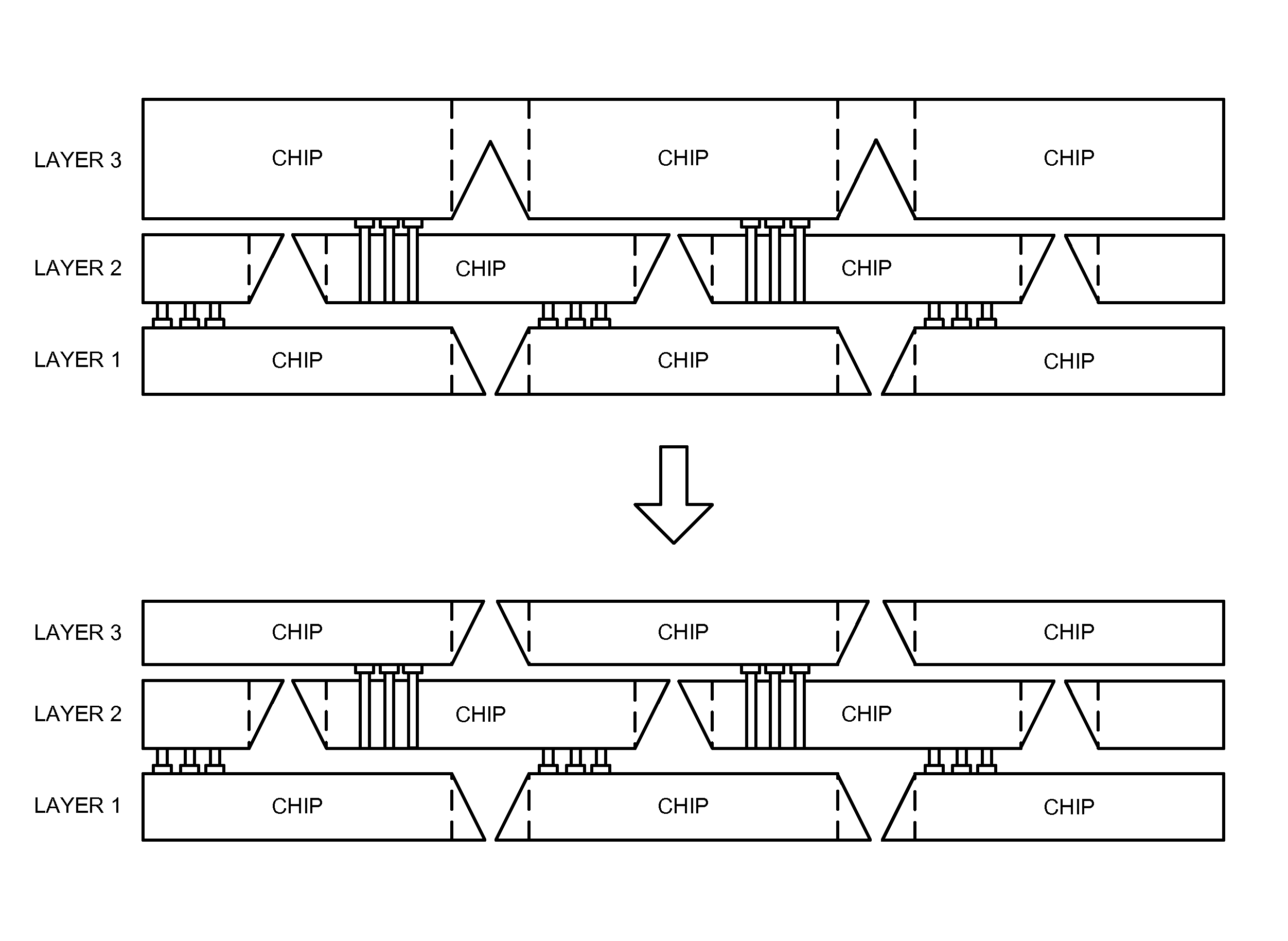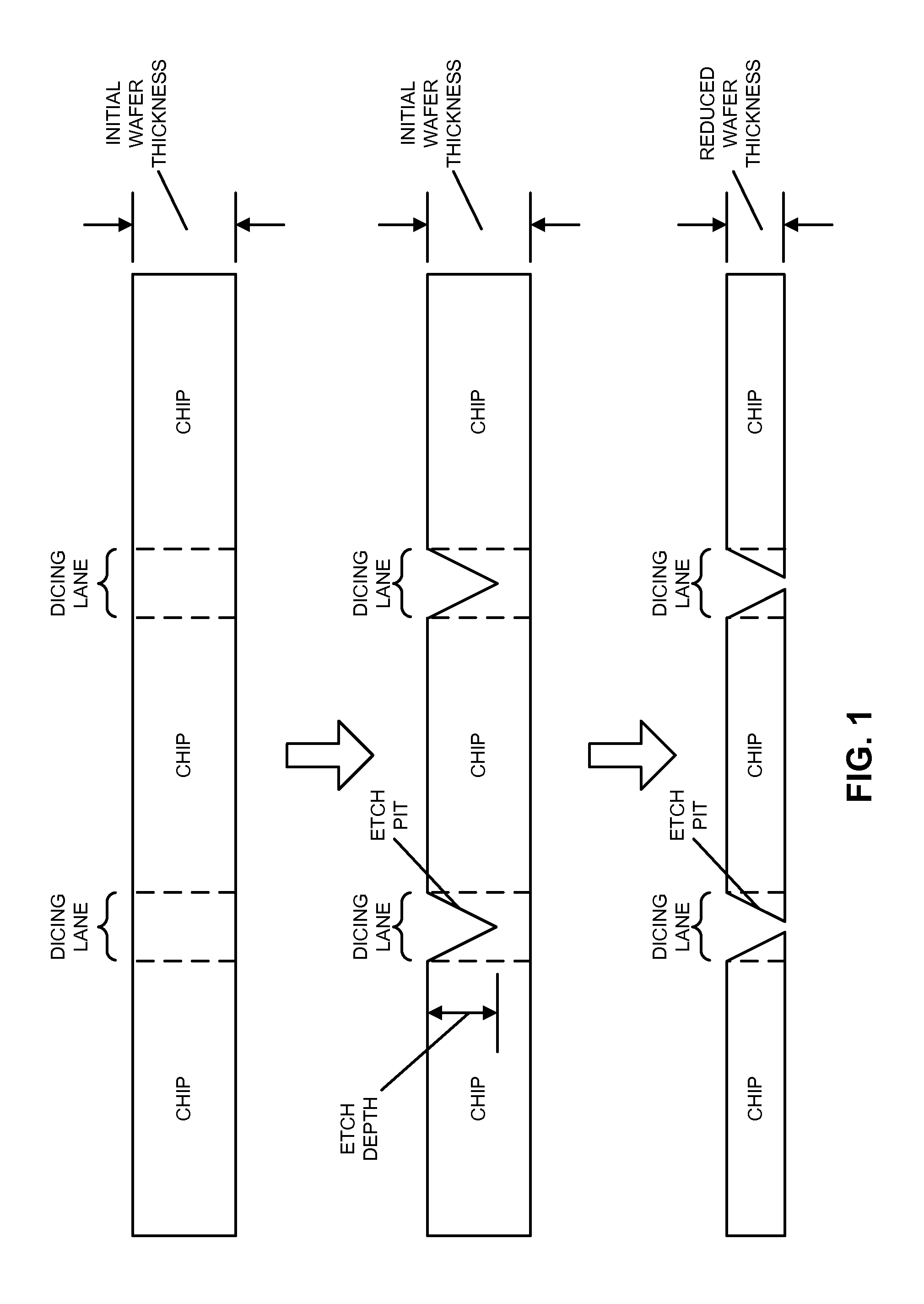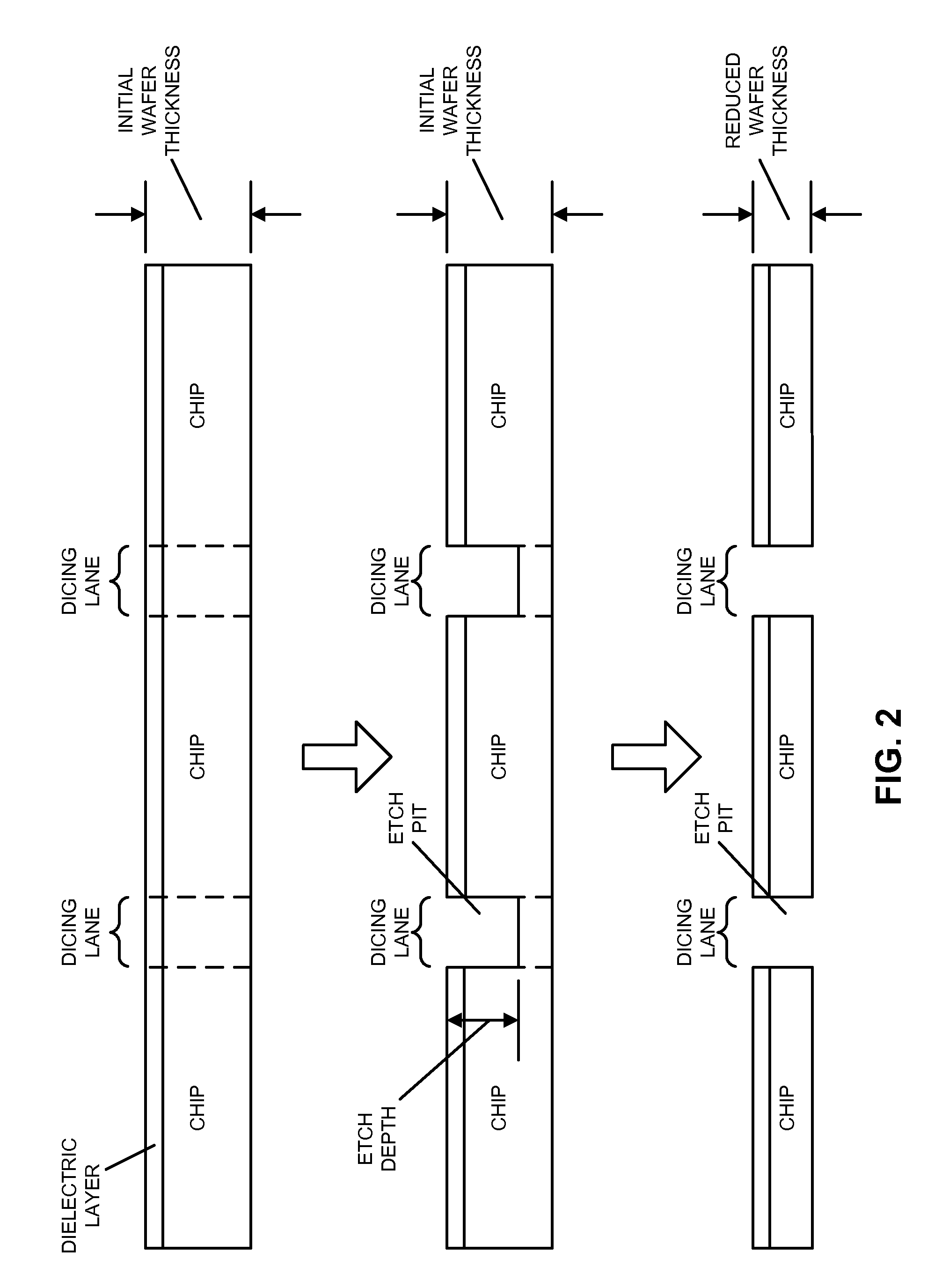Batch process for three-dimensional integration
a three-dimensional integration and chip technology, applied in the direction of electrical equipment, semiconductor devices, semiconductor/solid-state device details, etc., can solve the problems of increasing the difficulty of existing inter-chip connections to provide suitable communication characteristics, low power, and difficulty in maintaining the performance of inter-chip interconnections between conventional individually packaged chips that are connected to printed circuit boards. , to achieve the effect of destroying one or more dielectric layers
- Summary
- Abstract
- Description
- Claims
- Application Information
AI Technical Summary
Benefits of technology
Problems solved by technology
Method used
Image
Examples
Embodiment Construction
[0030]Embodiments of a chip package and a technique for singulating chips from a wafer are described. This chip package includes a first chip having a first surface and first sides having a first side-wall angle, and a second chip having a second surface and second sides having a second side-wall angle, which faces and is mechanically coupled to the first chip. The chip package is fabricated using a batch process, and the chips in the chip package are singulated from their respective wafers after the chip package is assembled. This is accomplished by etching the first and second side-wall angles and thinning the wafer thicknesses prior to assembling the chip package. For example, the first and / or the second side walls can be fabricated using wet etching or dry etching. Therefore, the first and / or the second side-wall angles may be other than vertical or approximately vertical.
[0031]By facilitating batch processing of the chips in the chip package (as opposed to serially integrating ...
PUM
 Login to View More
Login to View More Abstract
Description
Claims
Application Information
 Login to View More
Login to View More - R&D
- Intellectual Property
- Life Sciences
- Materials
- Tech Scout
- Unparalleled Data Quality
- Higher Quality Content
- 60% Fewer Hallucinations
Browse by: Latest US Patents, China's latest patents, Technical Efficacy Thesaurus, Application Domain, Technology Topic, Popular Technical Reports.
© 2025 PatSnap. All rights reserved.Legal|Privacy policy|Modern Slavery Act Transparency Statement|Sitemap|About US| Contact US: help@patsnap.com



